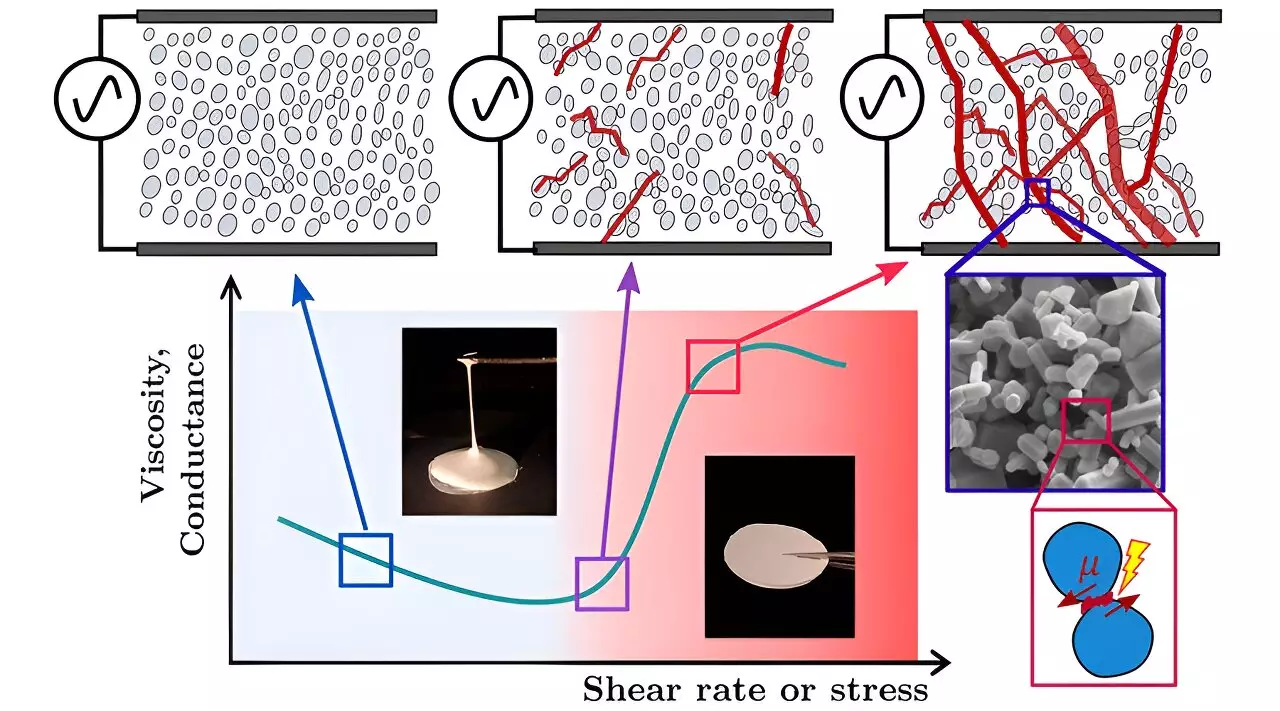Non-Newtonian fluids have captivated scientists and researchers for many years due to their unique properties that defy traditional definitions of solids and liquids. From oobleck to quicksand, these substances exhibit behaviors that change under stress or pressure, posing a challenge for scientists to understand their underlying physics. However, a breakthrough study conducted by researchers at the University of Chicago’s Pritzker School of Molecular Engineering (PME) has shed light on the fundamental aspects of non-Newtonian fluids using piezoelectric nanoparticles. This article delves into the exciting findings of this study and explores the potential applications that could emerge from a deeper understanding of these intriguing materials.
One of the primary questions that scientists have grappled with is the cause of the transition from fluid-like to solid-like behavior in non-Newtonian fluids. The team at PME, led by Professor Stuart Rowan, discovered that friction between particles plays a crucial role in this transformation. Through their experiments, they found that when the friction between particles reaches a certain level in a concentrated particle suspension, the viscosity abruptly increases, resulting in a more solid structure. This breakthrough not only answers long-standing questions but also opens the door to designing new non-Newtonian fluids with practical applications.
The newfound understanding of non-Newtonian fluids has significant implications for various industries. By harnessing the unique properties of these materials, scientists envision the development of innovative products that can enhance existing processes and create new possibilities. Here are a few potential applications:
1. Paint that Doesn’t Clump: One of the annoyances of working with paint is the tendency for it to clump together. By utilizing non-Newtonian fluids, researchers could design paints that maintain a smooth consistency, even when left undisturbed for extended periods. This breakthrough could revolutionize the painting industry, making the application process more efficient and reducing waste.
2. Moldable Liquids: Imagine a liquid that can transform into a solid with the slightest agitation. Non-Newtonian fluids can enable the creation of liquids that harden into a mold-like shape when shaken or exposed to mechanical force. This advancement could have far-reaching implications in industries such as manufacturing and construction, where the ability to quickly and easily create customized shapes is crucial.
3. Wearable Protective Gear: Non-Newtonian fluids have the potential to revolutionize the field of protective gear. By incorporating these materials into the design of helmets, knee pads, or body armor, researchers could create gear that remains soft and flexible during normal use but instantly stiffens upon impact, providing enhanced protection. This innovation could significantly improve safety in various high-risk activities and industries.
4. Customizable Viscosity: The ability to control viscosity through stress opens up a world of possibilities for researchers. By precisely tailoring the combination of solvents, particles, and shear conditions, scientists could create non-Newtonian fluids with customized properties for specific applications. This level of control could lead to advancements in industries such as cosmetics, pharmaceuticals, and food processing.
The significance of the recent study by the PME team extends beyond the realm of fundamental research. Non-Newtonian fluids are ubiquitous in our daily lives, from toothpaste to yogurt, and gaining a deeper understanding of their behavior holds tremendous practical value. By continually pushing the boundaries of what is possible, researchers aim to unlock the full potential of these materials and create novel solutions that address real-world challenges.
The study conducted by the University of Chicago’s PME researchers has provided invaluable insights into the physics of non-Newtonian fluids. By unraveling the role of friction in the transition from fluid to solid behavior, scientists are now equipped to explore new avenues of research and application development. The myriad potential applications, from paint that doesn’t clump to wearable protective gear, offer a glimpse into the transformative power of non-Newtonian fluids. As researchers continue to push the boundaries of our understanding, we can expect to witness remarkable innovations that have the potential to revolutionize industries and improve our lives.


Leave a Reply